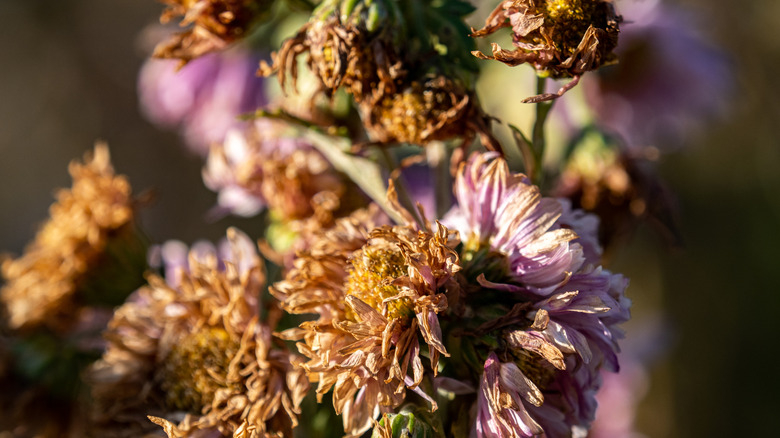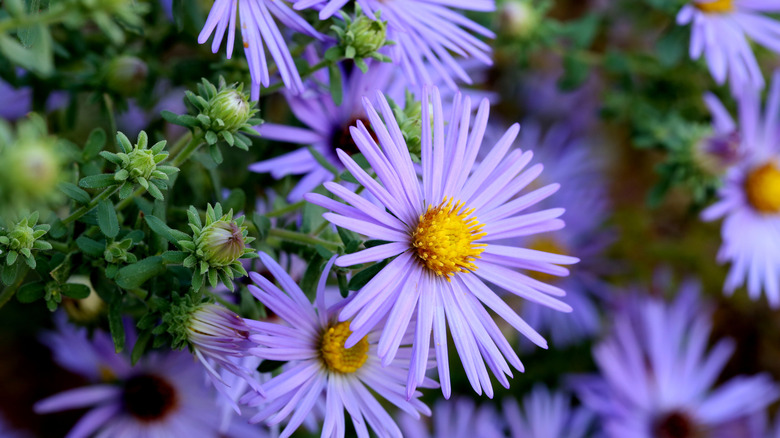The Best Ways To Prevent Aster Flowers From Turning Brown
Asters are beautiful, hardy plants that brighten up any garden with their daisy-like flowers. However, there are issues that cause their petals and leaves to turn brown before the end of the blooming season. Note that even when you grow and take care of Asters well, the flowers will eventually brown naturally as the plant prepares for seed production. That said, when browning happens prematurely, it's usually a sign that something's wrong. Watering the plants properly, ensuring they get enough sunlight, and protecting them from diseases and pests are excellent ways to keep their blooms fresh and healthy longer.
One of the most avoidable errors can harm your Asters, and a common cause of browning flowers, is improper watering. Overwatering and underwatering can both stress out the plant, leading to discolored or dry petals and leaves. Asters prefer well-drained soil that stays consistently moist but is never waterlogged. If the roots are sitting in soggy soil for too long, the blooms can wilt. Likewise, not enough water can cause the blooms to dry out too quickly. To keep your Asters happy, water them deeply and consistently, providing about an inch of water on a weekly basis.
Asters need full sun to thrive, meaning they should receive at least six hours of direct sunlight each day. Without enough light, the flowers might turn brown or wilt early. If you notice browning in an area with too much shade, consider relocating the plant to a sunnier spot. Just be mindful of not overexposing it to extreme midday heat, which can cause sunburn.
Preventing Aster flower browning with proper care
Asters are prone to certain diseases and pests that can lead to brown leaves and petals, so keeping the plants disease-free is equally important for ensuring vibrant, healthy blooms. Powdery mildew, a fungal disease, is a common issue that affects Asters, especially in areas that experience high humidity. It shows up as a white, powdery coating on the leaves, which can cause leaves to fall off and the flowers to wilt. To prevent this, make sure you space your plants far enough apart that there is good air circulation, which will help reduce humidity around the leaves. If you notice any signs of mildew, remove the affected leaves right away and consider using a fungicide to prevent further spread.
Aphids, tiny pests that suck the sap from plants, can also make their homes on Asters, causing the blooms to lose their shape. If you want to get rid of aphids, keep your plants healthy through regular maintenance and remove any dead or damaged foliage. You can also introduce natural predators like ladybugs, which feed on aphids, or apply an insecticidal soap. Lastly, as the Aster blooms begin to fade and the flowers start to brown naturally, consider deadheading the brown flowers. This will not only keep the plants looking tidy but also encourage new buds to form, extending the blooming season for as long as possible.

